Week 18 & 19 - Training ConvLSTM for raw samples
Proposed net
Continuing with the use of raw images recurrence propose the use of ConvLSTM layer resulting in the following net:
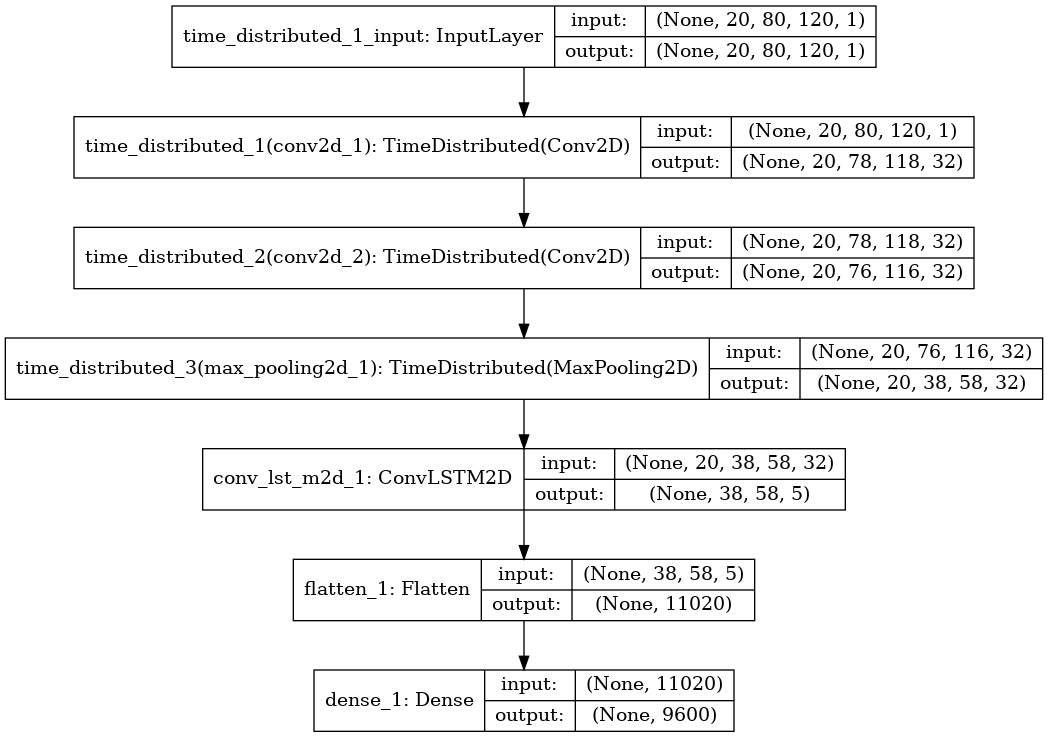
Before the recurrent layer, it is necessary to introduce a convolve to reduce the dimensionality of the data and make it more manageable.
Linear dataset results
- 1 DOF, 8000 training samples, 1000 test samples
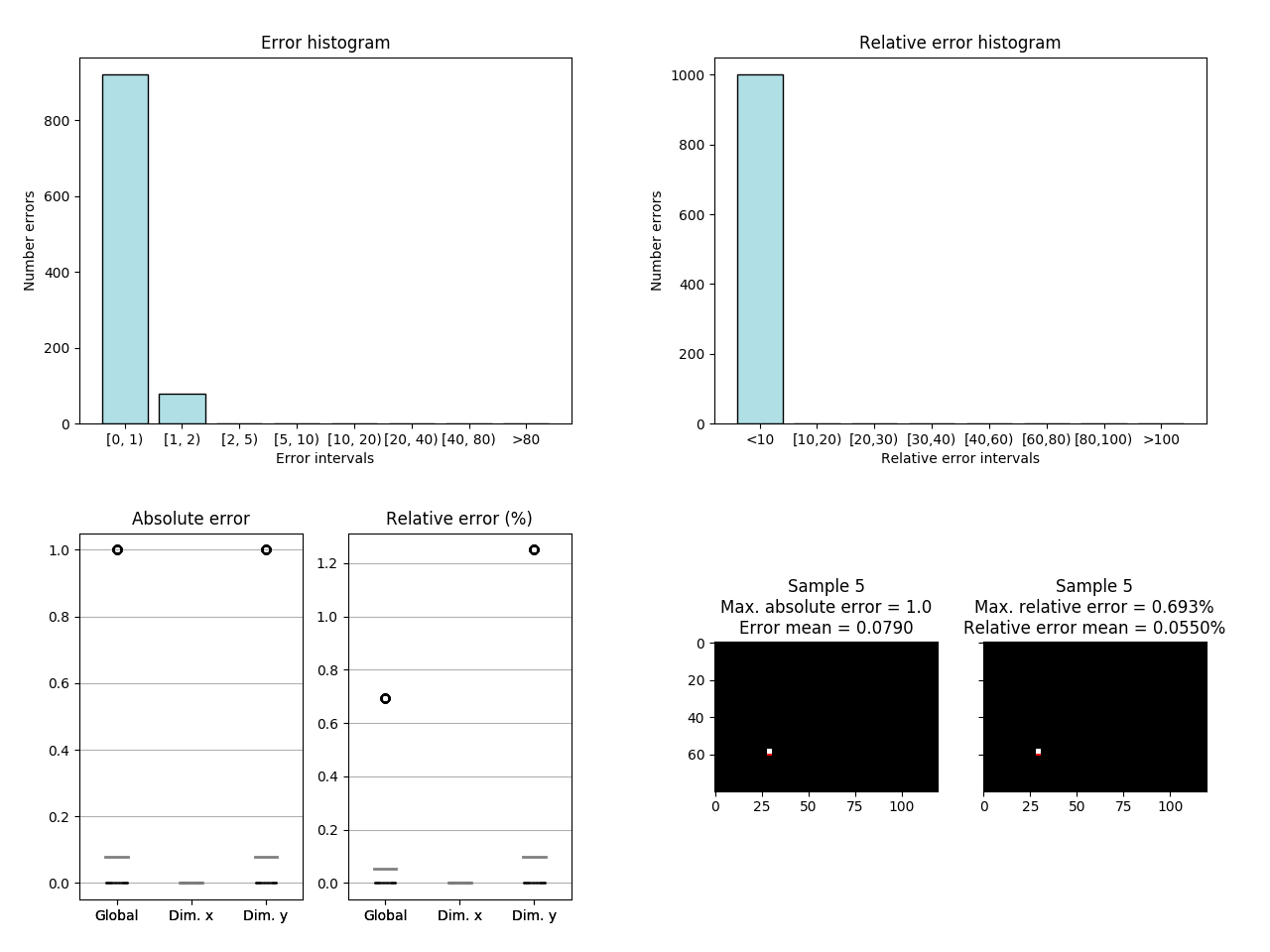
- 2 DOF, 8000 training samples, 10000 test samples
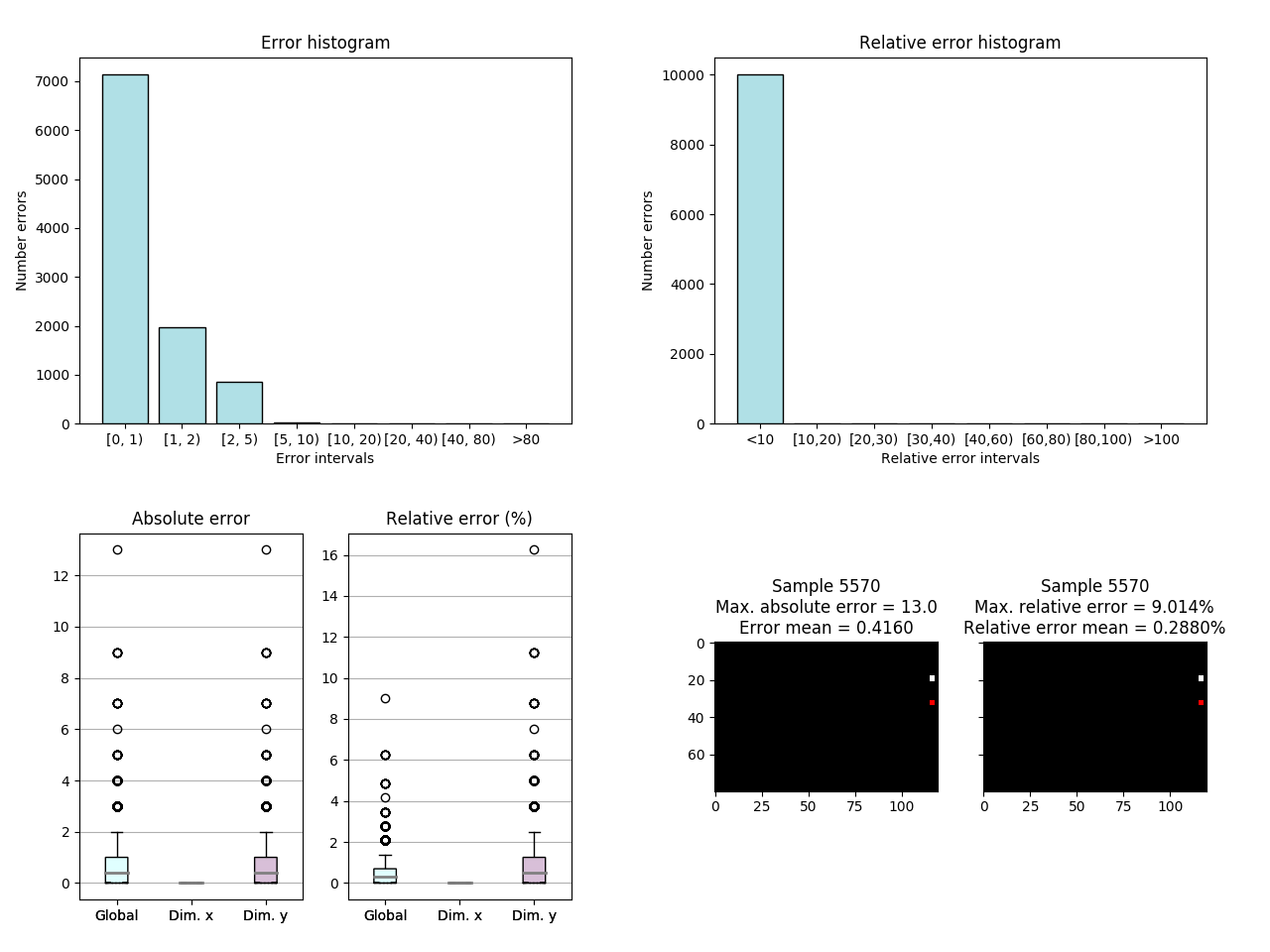
Parabolic dataset results
- 1 DOF, 8000 training samples, 10000 test samples
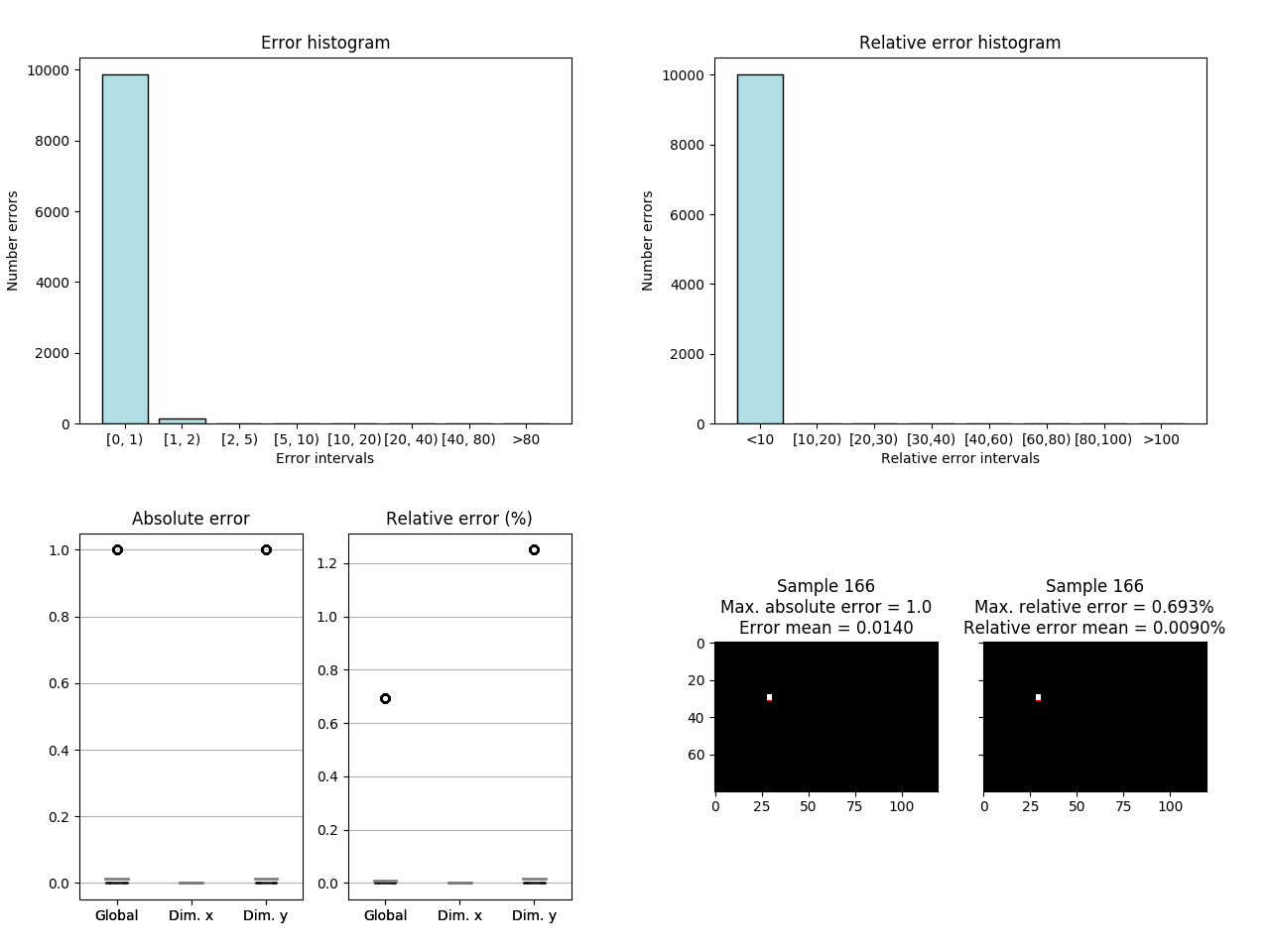
- 2 DOF, 8000 training samples, 10000 test samples
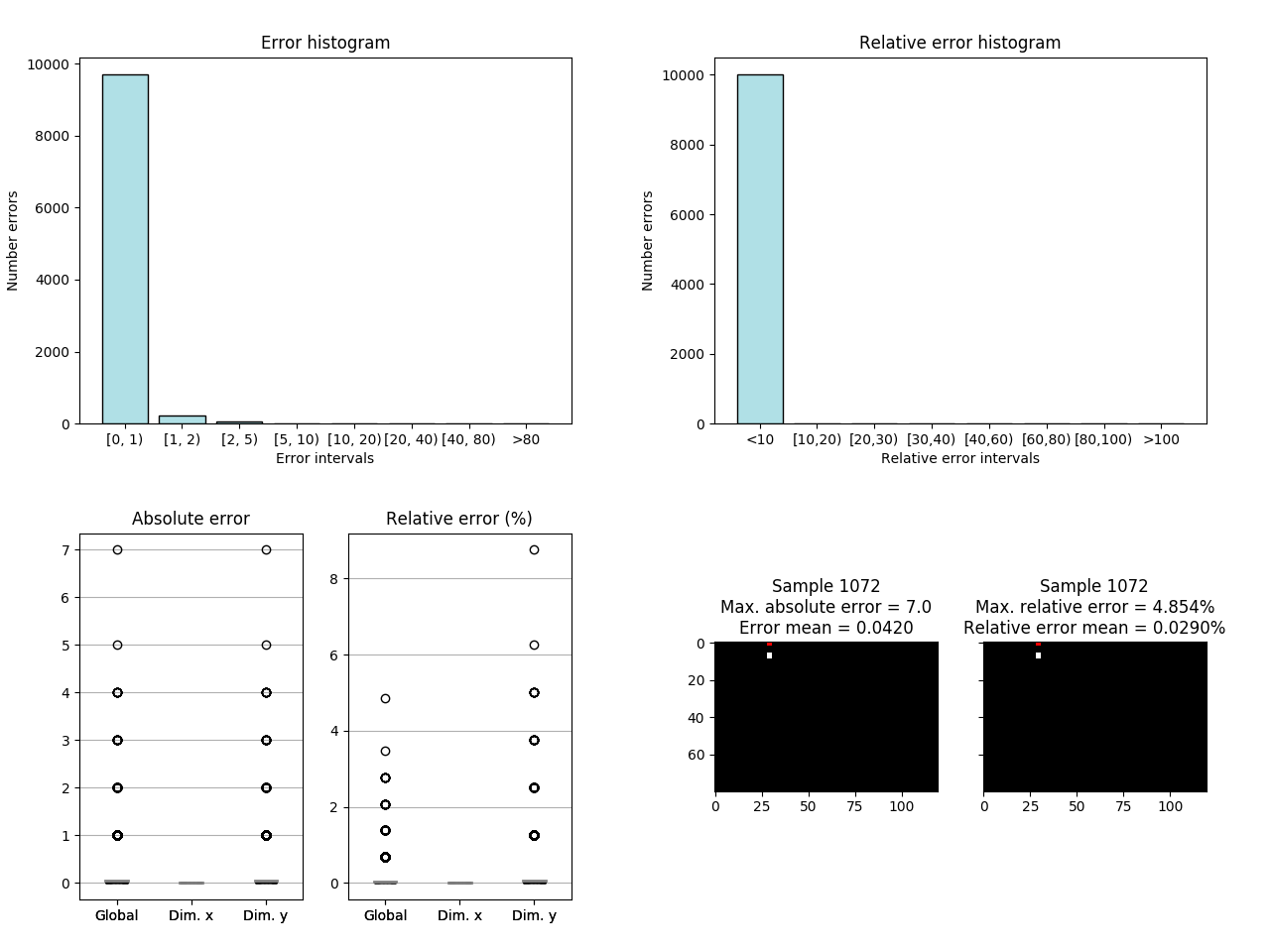
- 3 DOF, 80000 training samples, 10000 test samples
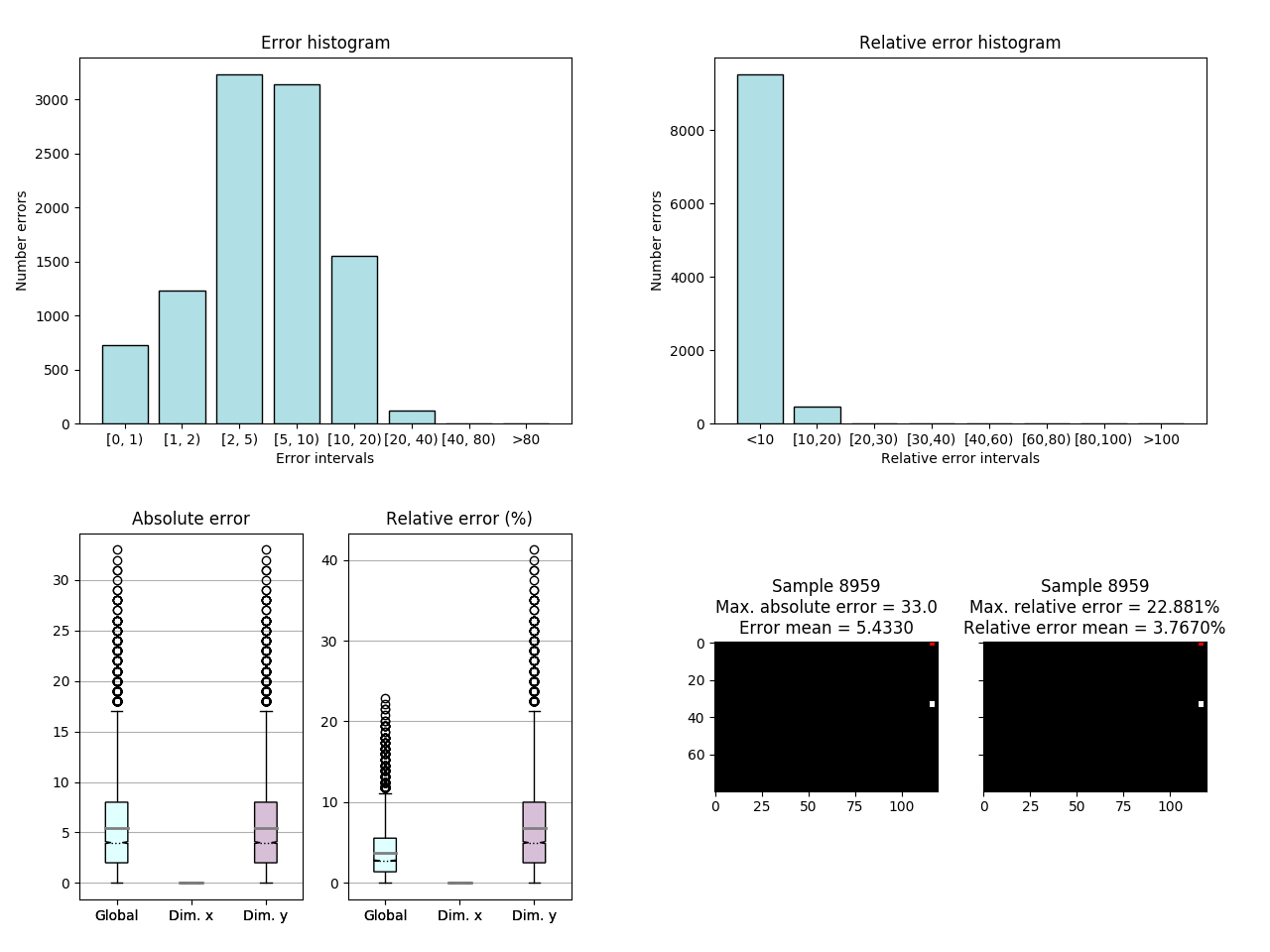
Sinusoidal dataset results
- 1 DOF, 80000 training samples, 10000 test samples
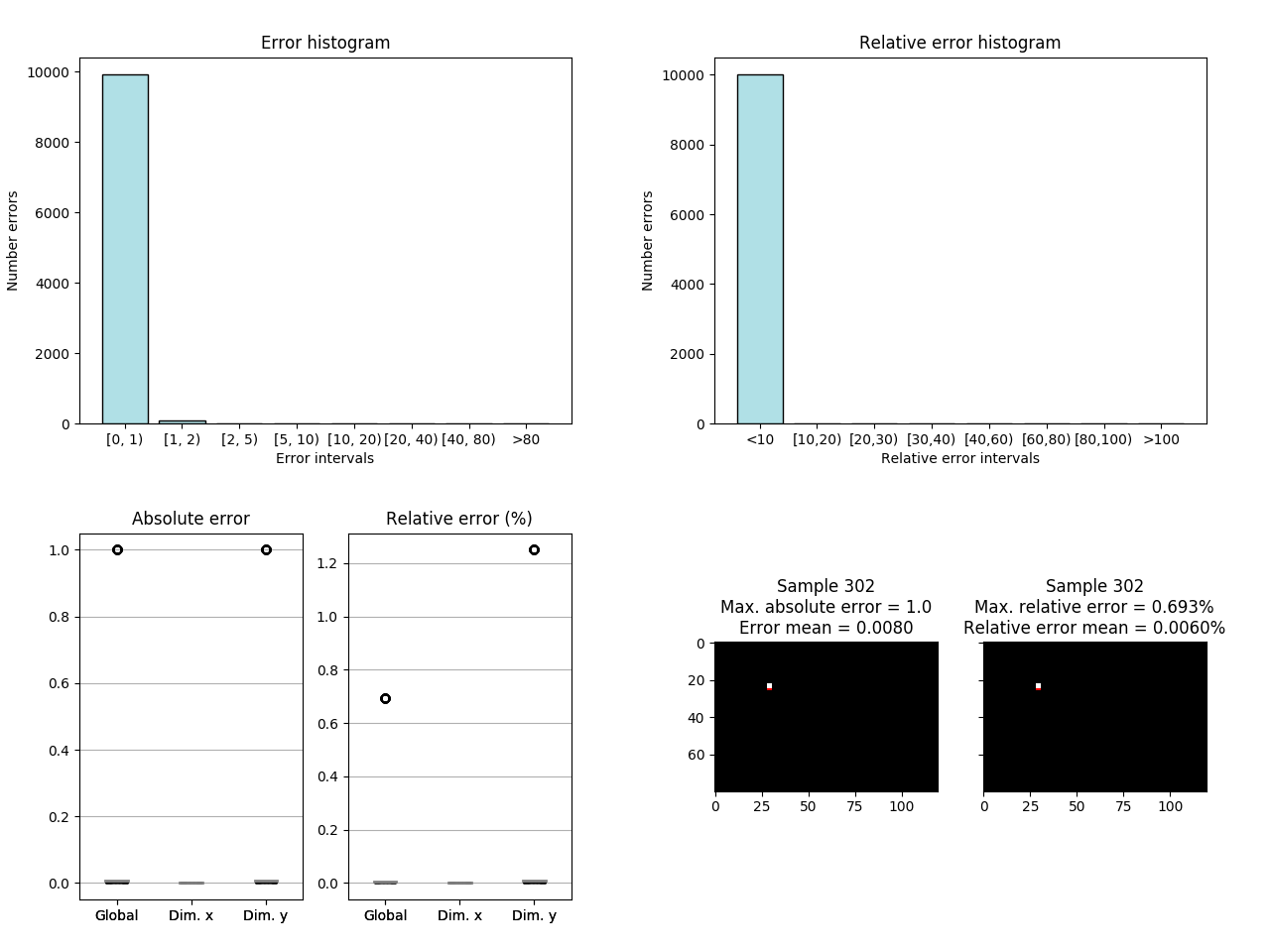
- 2 DOF, 80000 training samples, 10000 test samples
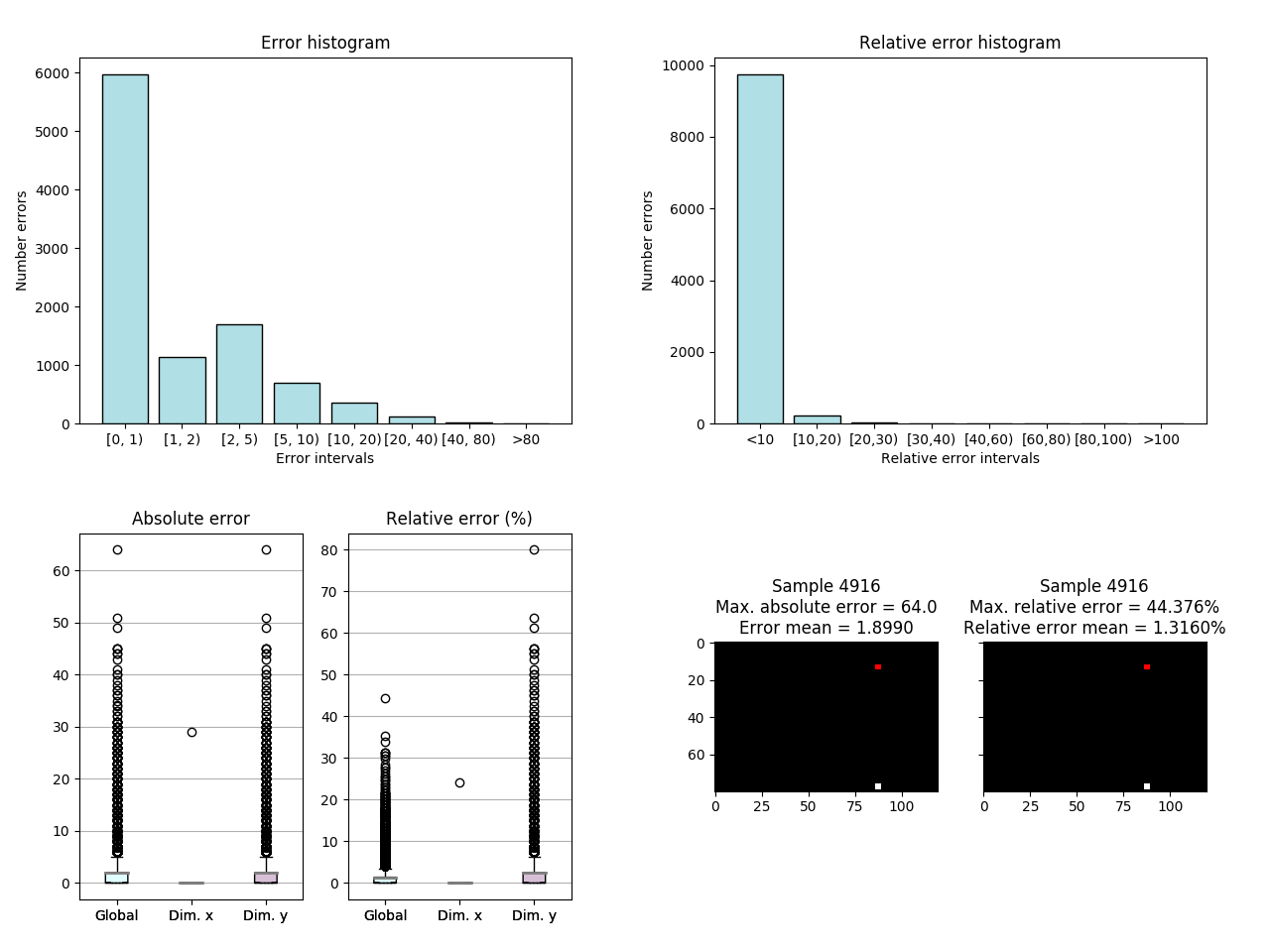
- 3 DOF, 80000 training samples, 10000 test samples
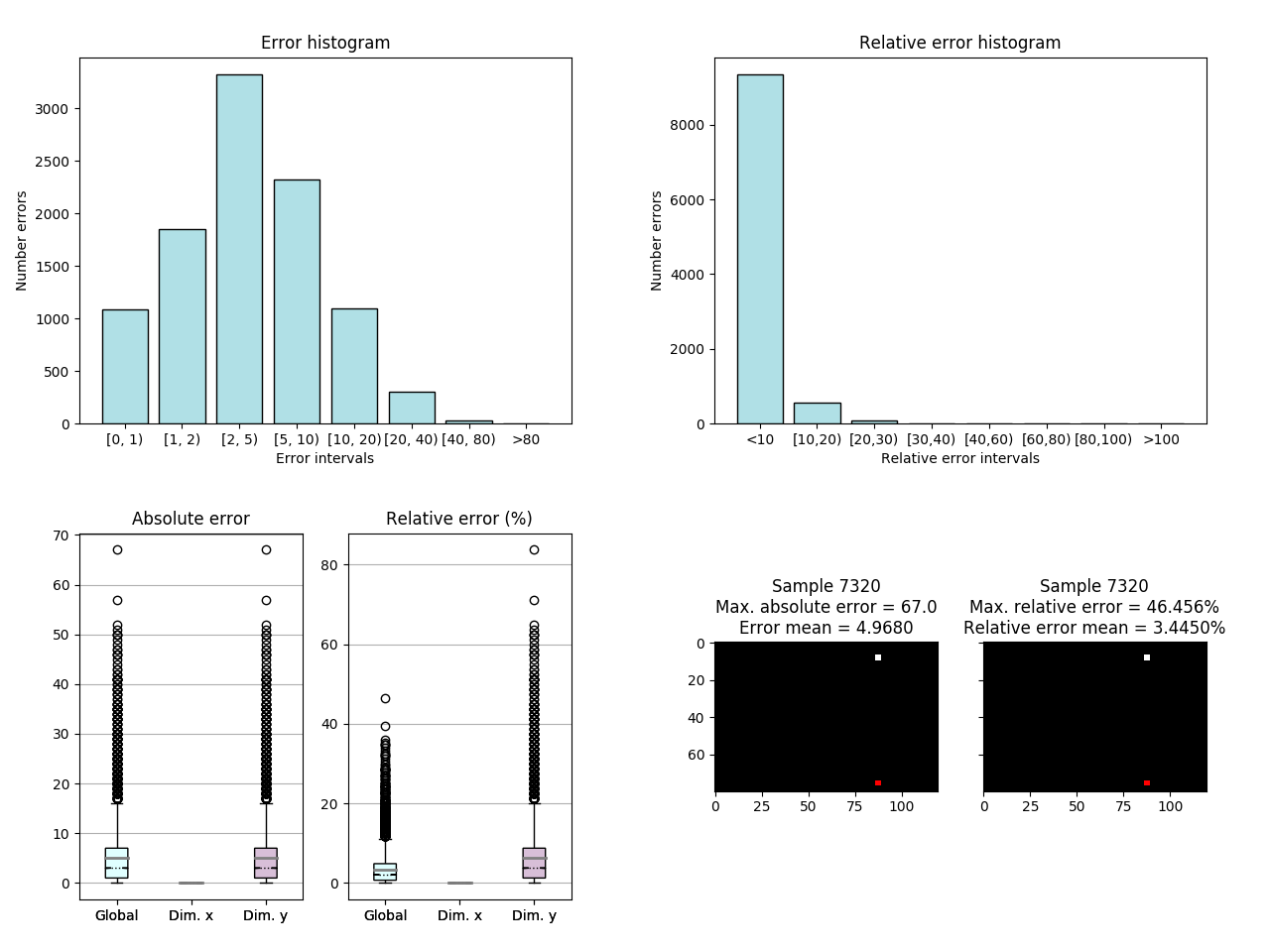
- 4 DOF, 80000 training samples, 10000 test samples
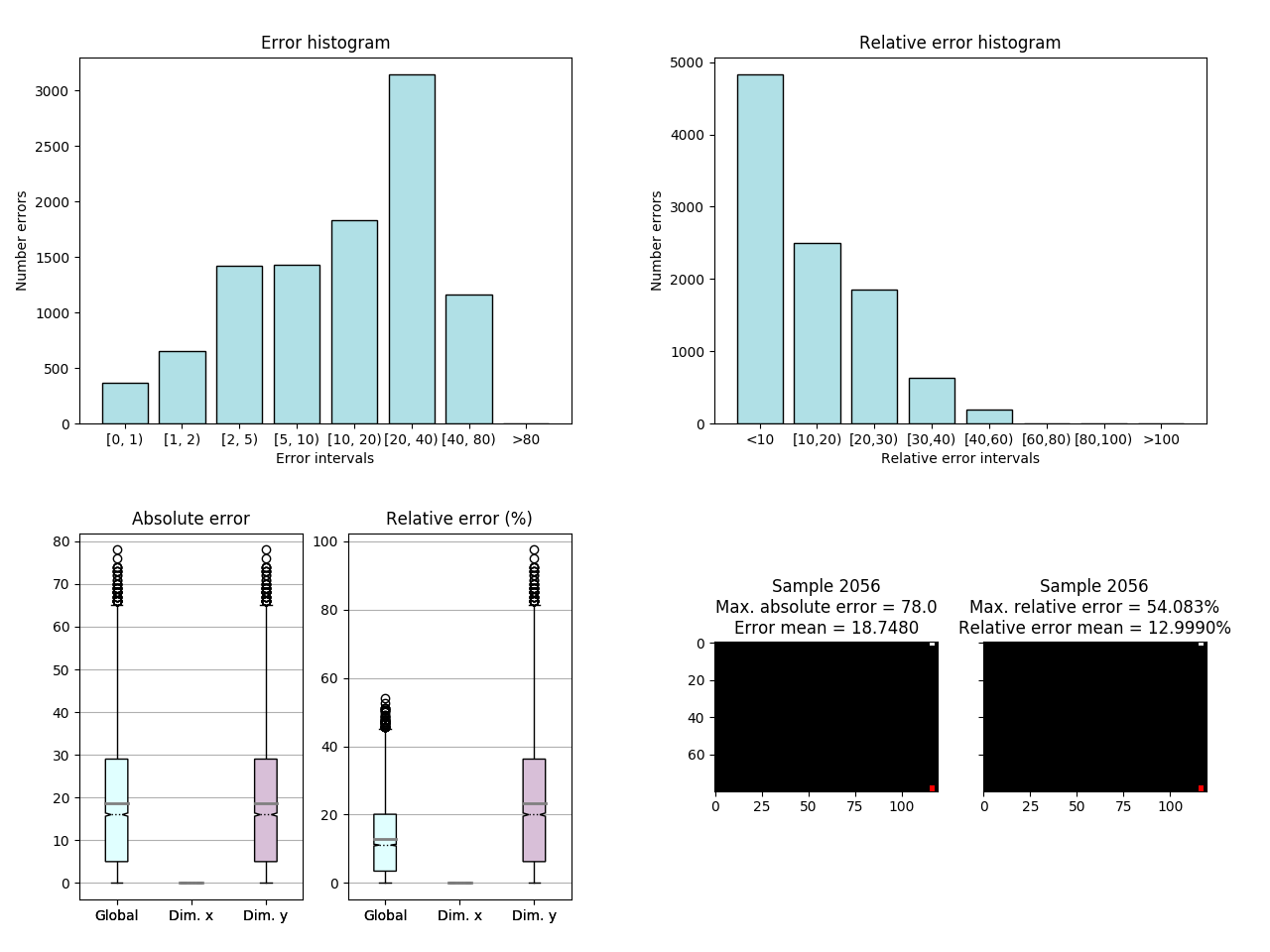
Conclusions
The results obtained are better than those of the CNN, although there is still a prediction limit in the prabolic 3 DOF and in the sinusoidal 2 DOF, although with a smaller error. It should also be noted that, although low average values are obtained, the maximums are high and there is a large presence of outliers that worsen the prediction.